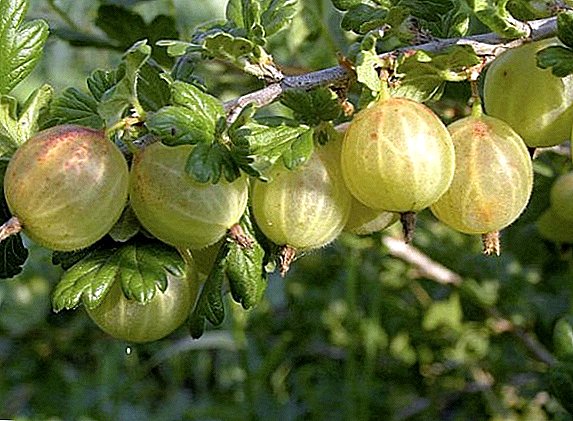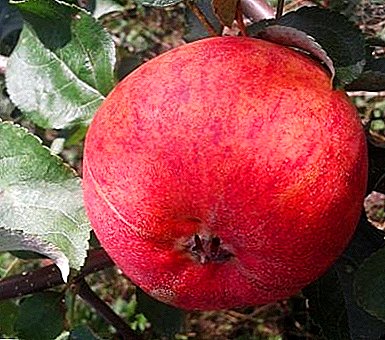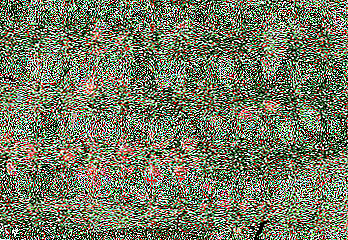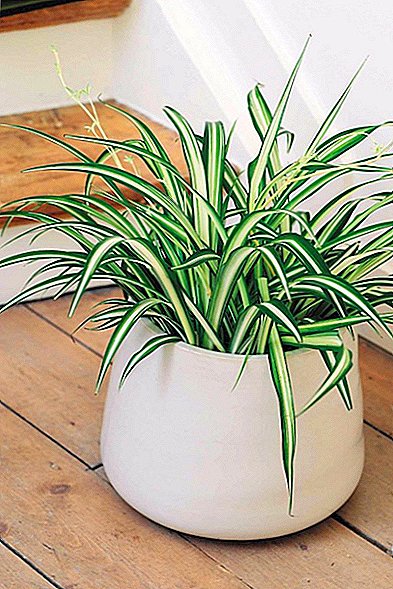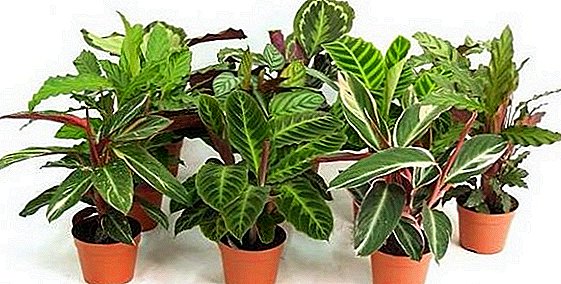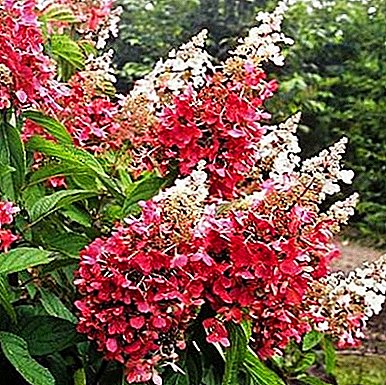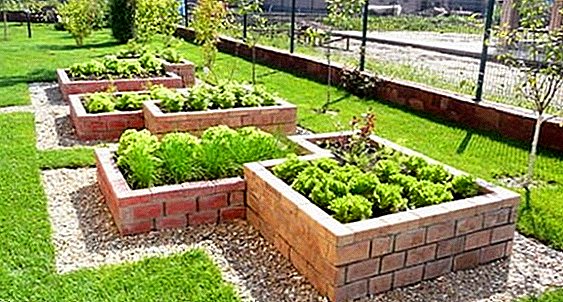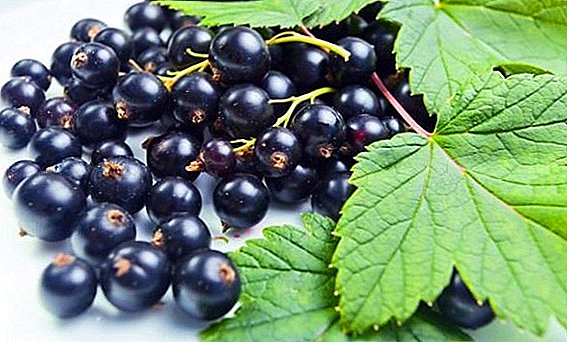 Almost all gardeners and landowners prefer currant cultivation. In the areas most often we meet black currant (Ribes nigrum), red (Ribes rubrum) and white currant (Ribes niveum), and yellow currant has recently become popular.
Almost all gardeners and landowners prefer currant cultivation. In the areas most often we meet black currant (Ribes nigrum), red (Ribes rubrum) and white currant (Ribes niveum), and yellow currant has recently become popular.
Currant diseases and their treatment
If you want your shrub to make you happy with berries from year to year, then you should know not only about the main intricacies of nursing, but also currants and pests of currants. The currant bush "signals" about its diseases: the leaves turn yellow, dry and fall, berries dry, the trunk begins to rot. And about the details of the treatment of currants, the most popular folk remedies for currants, we will discuss in this article.  Almost all gardeners and landowners prefer currant cultivation. At the sites most often we meet black currant (Ribes nigrum), red (Ribes rubrum) and white currant (Ribes niveum), yellow currant is gaining popularity recently. If you want your shrub to make you happy with berries from year to year, then you should know not only about the main intricacies of nursing, but also currants and pests of currants. The currant bush "signals" about its diseases: the leaves turn yellow, dry and fall, berries dry, the trunk begins to rot. And about the details of the treatment of currants, the most popular folk remedies for currants, we will discuss in this article.
Almost all gardeners and landowners prefer currant cultivation. At the sites most often we meet black currant (Ribes nigrum), red (Ribes rubrum) and white currant (Ribes niveum), yellow currant is gaining popularity recently. If you want your shrub to make you happy with berries from year to year, then you should know not only about the main intricacies of nursing, but also currants and pests of currants. The currant bush "signals" about its diseases: the leaves turn yellow, dry and fall, berries dry, the trunk begins to rot. And about the details of the treatment of currants, the most popular folk remedies for currants, we will discuss in this article.
Anthracnose (fly sniper)
Probably every gardener noticed that in the middle of summer (most often in July), after heavy rains, red spots with a brown tinge began to appear on currant leaves. Over time, these spots "spread" over the entire leaf area. Usually this leads to the fact that the leaf at the edges begins to dry out and takes on the color of the spot itself, because the fly underneath strikes the leaf petioles.
 Anthracnose is a fungal disease, and if it hits your shrub, then you will harvest a much smaller crop, and if you do not start treating currants, the plant will die in 4 years. This disease is insidious, because in winter the spores of the fly-behind "live" in the foliage that has fallen from the bush.
Anthracnose is a fungal disease, and if it hits your shrub, then you will harvest a much smaller crop, and if you do not start treating currants, the plant will die in 4 years. This disease is insidious, because in winter the spores of the fly-behind "live" in the foliage that has fallen from the bush.
Important!The plant will not get sick if you clean up the fallen leaves for the winter and sprinkle dry soil on the ground under the bush.The main thing in the fight against anthracnose is to prevent an epidemic among other bushes. Therefore, if you have already noticed this parasite on your bushes, it is better not to spare him to destroy, and for the prevention of still healthy plants, use Bordeaux liquid in the ratio of 100 g of solution to 10 liters of water. If folk remedies in the fight against diseases and pests of currants for you are unacceptable, then you can use the chemical drug "Phytodoctor" (use following the instructions).
American powdery mildew (sphere library)
 The sphere library is a fungus that appears in the middle of summer on young leaves of the currant. It manifests itself in the form of a white, easily erasable plaque, which then develops into a white cobweb on a currant - over time it affects the old leaves, and even the harvest. There is another kind of powdery mildew - European powdery mildew, which has the same symptoms and methods of struggle. The fight against this disease is best done in early spring, until the bud breaks. The best method is to spray the bushes with a solution of ferrous sulfate (10 g per 30 liters of water).
The sphere library is a fungus that appears in the middle of summer on young leaves of the currant. It manifests itself in the form of a white, easily erasable plaque, which then develops into a white cobweb on a currant - over time it affects the old leaves, and even the harvest. There is another kind of powdery mildew - European powdery mildew, which has the same symptoms and methods of struggle. The fight against this disease is best done in early spring, until the bud breaks. The best method is to spray the bushes with a solution of ferrous sulfate (10 g per 30 liters of water).
This spraying should be carried out immediately after flowering, and then repeated 2-3 times with an interval of 10 days. Also a rather effective way of dealing with a sphere library is spraying humus infusion to a bush. for its preparation, it is necessary to pour well “steamed” humus with water in the ratio of 1 part of humus to 2 parts of water, leave for 2 days, strain and spray the plant with this solution. If the bush already has a startled escape, it must be destroyed.
Did you know? Red currant is much easier to “experience” the disease of the American powdery mildew than the black currant.
Glass rust
 Warts of a reddish-brown color are glass rust. This disease affects all the "organs" of the bush: from the ovary to the trunk. If sedge grows near your site, this is the first and main cause of currant disease. This disease can lead to loss of crop and drying of currant branches. The fight against this disease is treating the bushes with phytosporin, if this does not help, you can use Bordeaux acid. Such preventive measures should be carried out 4 times with an interval of 10 days.
Warts of a reddish-brown color are glass rust. This disease affects all the "organs" of the bush: from the ovary to the trunk. If sedge grows near your site, this is the first and main cause of currant disease. This disease can lead to loss of crop and drying of currant branches. The fight against this disease is treating the bushes with phytosporin, if this does not help, you can use Bordeaux acid. Such preventive measures should be carried out 4 times with an interval of 10 days.
Terry (reversion)
Reversion affects all types of currant, without exception, because the causative agent of this plant is hidden in the juices. It manifests itself mainly in the violet color: the petals become purple and narrow, the fruits are not tied. If your plant is already affected, then an image of branches or leaves will not help. Here we are talking only about the destruction of the entire bush. To prevent this disease, it is necessary to regularly add potassium, phosphorus to the soil, and you can also water the plant with manganese and boron solutions.
Important! Nitrogen fertilizers only contribute to the development of this disease.
Nektrievaya drying shoots and currant branches
 This disease is one of the most "severe" for currants, which affects predominantly red and white currants and leads to the total drying of currant branches. The first sign is the appearance of reddish-brown tubercles at the base of the branches. For the prevention of this disease, it is necessary to follow the rules of agrotechnology, and if it has already fully developed on the bush, then the affected branches should be cut and burned, and the wounds should be smeared with garden pitch.
This disease is one of the most "severe" for currants, which affects predominantly red and white currants and leads to the total drying of currant branches. The first sign is the appearance of reddish-brown tubercles at the base of the branches. For the prevention of this disease, it is necessary to follow the rules of agrotechnology, and if it has already fully developed on the bush, then the affected branches should be cut and burned, and the wounds should be smeared with garden pitch.
Striped (streaky) mosaic
The usual processing of currants from pests and diseases will not help for the prevention of viral disease - striped (streaky) mosaic. Usually this disease overtakes the bushes at the beginning of the summer. The main and only symptom: on the leaves, around the main veins there appears a pale yellow pattern, which with the development time becomes brighter. In this case, it is not necessary to talk about the treatment of currants, the only way out is to uproot the bush and burn it. But, preventive methods can be carried out: to process the bush from insects in a timely manner, and also to use healthy material for planting.
Gray rot
Gray rot - a fungal disease, due to which the leaves become dark brown in color, and white currant can even be affected by wood.
Did you know?Gray rot affects almost all berry plants.
If your bush is affected, it will lead to the "death" of the leaves, the deterioration of the quality of the berries and the imminent death of the whole plant. The main method of fighting the disease is to collect and destroy the affected areas, and you can also treat the plant with fungicides, but this can be done only before the formation of fruits. It is best to carry out processing during the flowering period.
Columnar rust
 Pillar rust appears in summer. Warm and too wet weather - this is the main causative agent of the disease, which massively affects currant bushes. To protect your bushes from this disease, you need to regularly rake the fallen leaves, process bushes with 1% Bordeaux liquid. It is best to carry out such processing in three stages: when blooming, when forming buds and after the color has fallen. It is also important to loosen the soil in time, but not deep (approximately 3-5 cm). But the main way is to choose the right place for planting: columnar rust develops on bushes near coniferous trees, so plant a bush better away from them.
Pillar rust appears in summer. Warm and too wet weather - this is the main causative agent of the disease, which massively affects currant bushes. To protect your bushes from this disease, you need to regularly rake the fallen leaves, process bushes with 1% Bordeaux liquid. It is best to carry out such processing in three stages: when blooming, when forming buds and after the color has fallen. It is also important to loosen the soil in time, but not deep (approximately 3-5 cm). But the main way is to choose the right place for planting: columnar rust develops on bushes near coniferous trees, so plant a bush better away from them.
Septoria (white spot) on currants
This disease is caused by a fungus that lives on fallen leaves. On young leaves, brown spots appear, with the development of which a white dot appears in the center of the speck, which grows and with time a white spot remains in the red frame. In areas of diseased bushes treated with nitrafenom, and if the damage is very strong, then you should apply a solution of copper sulfate. But in the fight against this disease, it is important not to treat currants, but when to do it, and it is better to do it in early spring before the formation of buds.
Important!A large number of weeds contributes to the development of diseases.
Shrinking shoots and currant branches
Everyone knows that the currant wood part is very elastic, but the symptom of this disease is the loss of elasticity of the bush and the appearance of cracks on the trunk and branches. In these cracks a fungus develops, the spores of which contribute to the spread of this disease. Ways to combat the drying out are very simple: compliance with the rules of agrotechnology and processing of sections with Bordeaux liquid (100 g per 10 l of water).
Currant disease prevention
 The first and most important advice in combating diseases and pests of currants - compliance with the rules of agricultural engineering, namely the regular loosening of the soil and digging in the bushes. Many, of course, are proud of the lush currant garden, but you should not allow too thick planting, for this you need to regularly cut the branches of the bushes.
The first and most important advice in combating diseases and pests of currants - compliance with the rules of agricultural engineering, namely the regular loosening of the soil and digging in the bushes. Many, of course, are proud of the lush currant garden, but you should not allow too thick planting, for this you need to regularly cut the branches of the bushes.
Currant Pests: How to Fight
Protecting currants from pests in the spring mainly consists of preventive measures. But if your garden is already affected by insects, then you should not immediately resort to chemical means, as they can harm your plant. For a start, you can try folk remedies, such as decoctions, infusions and spraying. We will talk further about their effectiveness and use nuances.
Two year old moth
The sheet worm strikes the buds and berries of the bush. The sheet worm looks like a caterpillar with a size of up to 22 mm. Again, the reason for their appearance can be unassembled fallen leaves, in which they hibernate. The caterpillar turns into a butterfly in mid-May from eggs that are laid on the buds and germ of the berries. Caterpillars eats buds from the inside. One such caterpillar can eat 30 buds a week. Butterflies fly out in 50 days. For reproduction, butterflies lay eggs on the already formed berries. You can fight a two-year-old moth by spraying the bushes with insecticides: Antio, Gardona, Zolon.
Willow shchitovka
 The females and the males of the scale are different: the female is wrinkled, pear-shaped, covered with a gray-brown skin. The male is of elongated form, with two grooves, one pair of wings, and antennae. The female lays purple-red eggs in the bark of the branches of a bush. Settling and revival of the larvae takes the entire period from currant budding to the end of the flowering period. Usually willow shchitovka occupies bushes that are not cared for. The method of dealing with this pest is the only one: cutting of damaged bushes and their destruction. For prevention, you can process bordeaux acid bushes in early spring, at a temperature not higher than 4 degrees.
The females and the males of the scale are different: the female is wrinkled, pear-shaped, covered with a gray-brown skin. The male is of elongated form, with two grooves, one pair of wings, and antennae. The female lays purple-red eggs in the bark of the branches of a bush. Settling and revival of the larvae takes the entire period from currant budding to the end of the flowering period. Usually willow shchitovka occupies bushes that are not cared for. The method of dealing with this pest is the only one: cutting of damaged bushes and their destruction. For prevention, you can process bordeaux acid bushes in early spring, at a temperature not higher than 4 degrees.
Gooseberry firing pin
The gooseberry fire is a butterfly, whose wings reach 3 cm in scope, whereas the body itself grows only up to 2 cm in length. The caterpillar is light green in color, and the butterfly has wings with a brown stripe and dark brown spots. The eggs laid by the female overwinter in the upper layers of the soil, in cocoons of cobwebs. When butterflies appear (mid-April), they lay their eggs in the color of the bush and in the buds. The fight against ogniyevka on currants consists in the timely cleaning of cobwebs from the bushes, and after flowering it is advisable to spray the bush with insecticide. Effectively in the fight against ognevku hilling soil mulch (layer about 8 cm).
Did you know?After flowering, the bush should be opened to air and improve the quality of the berries.
Gooseberry sawfly
 The larvae of this parasite are dirty green and usually hibernate in cocoons of cobwebs in the soil at a depth of 12-15 cm. One female can lay up to 150 eggs per week. These insects develop very quickly, and over the summer, two or even three generations can live on your site.
The larvae of this parasite are dirty green and usually hibernate in cocoons of cobwebs in the soil at a depth of 12-15 cm. One female can lay up to 150 eggs per week. These insects develop very quickly, and over the summer, two or even three generations can live on your site.
The methods of fighting against sawfly are almost indistinguishable from fighting against other pests, the only difference is that spraying should be carried out in two stages: against the first generation - from the moment of bud formation and before budding, and the second stage - immediately after flowering. If, after you have harvested the crop, the insects reappear, then insecticide spraying can be carried out again. The easiest way to deal with the sawfly is to shake off the larvae manually.
Gooseberry Shoot Aphid
Aphids live in colonies: the larvae winter in the bark of a young shoot, and in the spring the female "spreads" her young throughout the bush. The invasion of the aphid colony causes the young leaves to dry out and, as a result, die off. To combat the pest, you can use a solution of soap: 300 g per 10 liters of water. For the destruction of insects are also effective funds from anthracnose. Insecticides are effective, but they cannot be sprayed with fruits.
Gooseberry moth
 Loaf moths moths eat leaves: first they gnaw out small holes, then, together with them, “wrap” in a cocoon and fall to the ground for wintering. The moth female lays its eggs in the summer on the inside of the leaf. The females are quite large - their wingspan can be 5 cm. Methods for fighting the peppered moth are the same as for other pests: spraying with insecticides, shaking the larvae by hand, loosening the ground.
Loaf moths moths eat leaves: first they gnaw out small holes, then, together with them, “wrap” in a cocoon and fall to the ground for wintering. The moth female lays its eggs in the summer on the inside of the leaf. The females are quite large - their wingspan can be 5 cm. Methods for fighting the peppered moth are the same as for other pests: spraying with insecticides, shaking the larvae by hand, loosening the ground.
Sheet gall aphid
This insect has another name - the "red-haly" aphid. They usually overwinter on the bark of shoots, near the buds. In the summer, when the growth of fresh shoots slows down, they move to plants growing nearby, and by the autumn they move to a bush. Females appear in summer and spread their descendants. Usually they live on the inside of the leaf, eating it. Yellow-red swellings - galls appear on the damaged leaf. Soap solution, insecticides (treatment in early spring), entomophages are effective means to combat these insects.
Did you know?Entomophagous - microorganisms that parasitize insects.
Spider mite
 This small sucking insect infects the leaves of the bush, making them "marble", after which they dry and fall. These larvae live on the inner side of the leaf, and winter is spent under fallen leaves. By damaging the leaf, mites dramatically reduce the yield and quality of the fruit. Most often the spider mite appears on the weeds, and then "moves" to the bush. It is necessary to fight ticks before the female lays eggs: spraying any of the acaricides will be an effective method.
This small sucking insect infects the leaves of the bush, making them "marble", after which they dry and fall. These larvae live on the inner side of the leaf, and winter is spent under fallen leaves. By damaging the leaf, mites dramatically reduce the yield and quality of the fruit. Most often the spider mite appears on the weeds, and then "moves" to the bush. It is necessary to fight ticks before the female lays eggs: spraying any of the acaricides will be an effective method.
Important! Requiredalternate drugs, as ticks develop immunity, and the effect over time will not be.
A good folk method is to water the currant bushes with hot water with the addition of potassium permanganate (the water should be pale pink).
Kidney mole
 This pest winters in the backward currant bark. You can distinguish the young mole - it is red, and the old one is olive-green. The bud moth feeds on buds and berries, and also damages the shoots in winter. Eggs are laid in green berries, from where seeds are eaten away, preventing the berry from reaching. The methods of struggle are as follows: cutting of damaged bushes and shoots in the autumn, treatment with Malophos (10%) no more than two times per season. It is also very important to monitor the planting density and, if necessary, clean the landing site.
This pest winters in the backward currant bark. You can distinguish the young mole - it is red, and the old one is olive-green. The bud moth feeds on buds and berries, and also damages the shoots in winter. Eggs are laid in green berries, from where seeds are eaten away, preventing the berry from reaching. The methods of struggle are as follows: cutting of damaged bushes and shoots in the autumn, treatment with Malophos (10%) no more than two times per season. It is also very important to monitor the planting density and, if necessary, clean the landing site.
Currant gall midges
There are three types of gall midges that can attack your currants: shoots, flowers and leaves. The principle of action is very similar, although they appear at different times: shoots - during the flowering period of currants, leaf - at the beginning of flowering, and flowers - during the formation of buds. They also lay eggs in different ways: leaf - on young leaves, not allowing them to dissolve; flower - in buds, which eventually turn yellow or redden and do not fall down without blossoming; shoots - on the bottom of the shoots, which are already covered with a wood coating. To combat gall midges, you need to cut out damaged shoots and bushes and spray insecticides during the formation of buds.
Currant Zlatka
 Currant Zlatka - It is a greenish-copper beetle, small in size. Overwinter usually in shoots. The larvae hatch in late May - early June. Larvae pave "tunnels" in the middle of the shoot. The branches that have damaged the goldfish dry and die, and the growth on the remaining ones is very small. They fight golds with the destruction of damaged shoots and their burning. In early spring, you can spray the bushes Parisian greens (15 g per 10 liters of water, and for the best effect, you can add another 30 g of lime).
Currant Zlatka - It is a greenish-copper beetle, small in size. Overwinter usually in shoots. The larvae hatch in late May - early June. Larvae pave "tunnels" in the middle of the shoot. The branches that have damaged the goldfish dry and die, and the growth on the remaining ones is very small. They fight golds with the destruction of damaged shoots and their burning. In early spring, you can spray the bushes Parisian greens (15 g per 10 liters of water, and for the best effect, you can add another 30 g of lime).
Currant Kidney Mite
Currant Kidney Mite - the most dangerous insect pest for currants, because it affects the kidneys, feeds on them and, worst of all, winters in them. During the season, several generations of mites may appear in the garden; for the rest of the plants they are usually carried by wind. The best method of dealing with a kidney tick is timely cutting of damaged bushes and uprooting completely infected bushes. To prevent ticks, you can also plant onions or garlic between the bushes - ticks do not like harsh odors. It is important to use healthy material for planting, for complete certainty you can keep the seedlings in hot water for 15-20 minutes.
Currant glass bowl
 Female glasslayers lay eggs in the damaged bark of the branches and trunk. Гусеницы, которые вылупляются, могут прокладывать туннели до 40 см. Гусеницы проводят два сезона в коре, постепенно "пробираясь" к выходу.The glasshouse itself appears after flowering. The butterfly is scaly, lilac-black in color with transverse stripes on the belly. Fighting with a glass bowl on currants is a complex process. It consists primarily in the timely pruning of the bushes, spraying with insecticides, regular inspection of the bush and lubrication of the sections with a disinfectant.
Female glasslayers lay eggs in the damaged bark of the branches and trunk. Гусеницы, которые вылупляются, могут прокладывать туннели до 40 см. Гусеницы проводят два сезона в коре, постепенно "пробираясь" к выходу.The glasshouse itself appears after flowering. The butterfly is scaly, lilac-black in color with transverse stripes on the belly. Fighting with a glass bowl on currants is a complex process. It consists primarily in the timely pruning of the bushes, spraying with insecticides, regular inspection of the bush and lubrication of the sections with a disinfectant.
Preventive Pest Control
Prevention of pests should begin before winter: spraying shrubs in the fall, cleaning fallen leaves - all this will help you protect your bushes from diseases and pests currants. A very important factor in prevention is the correct selection of chemicals: it is important that they do not have nitrogen in their composition. In addition, it is necessary to loosen and dig up the ground in time, which will destroy the pests that live in the upper layers of the soil. Of course, every gardener dreams of a lush garden with a lot of berry bushes, but do not forget that too thick planting will only harm your plants. The life span of your berry bushes depends only on how you take care of them, because everything grows and develops , if you put your love in it.




